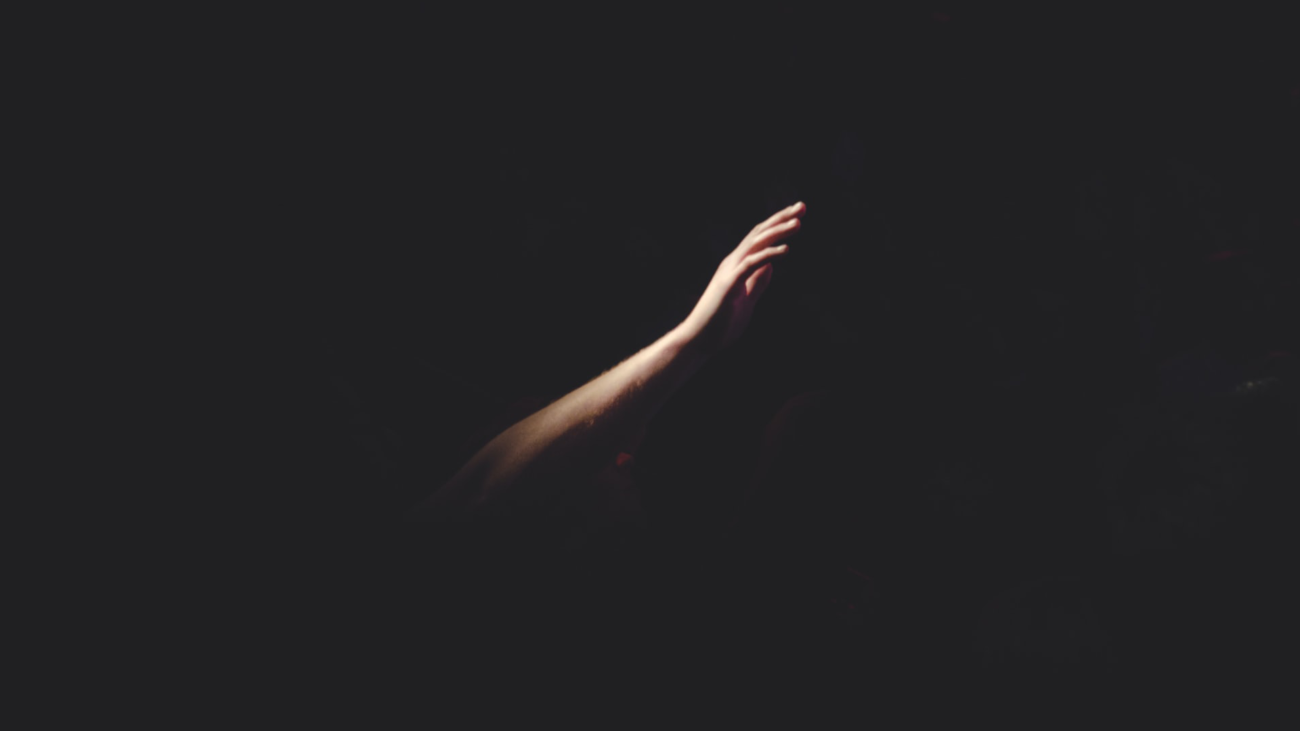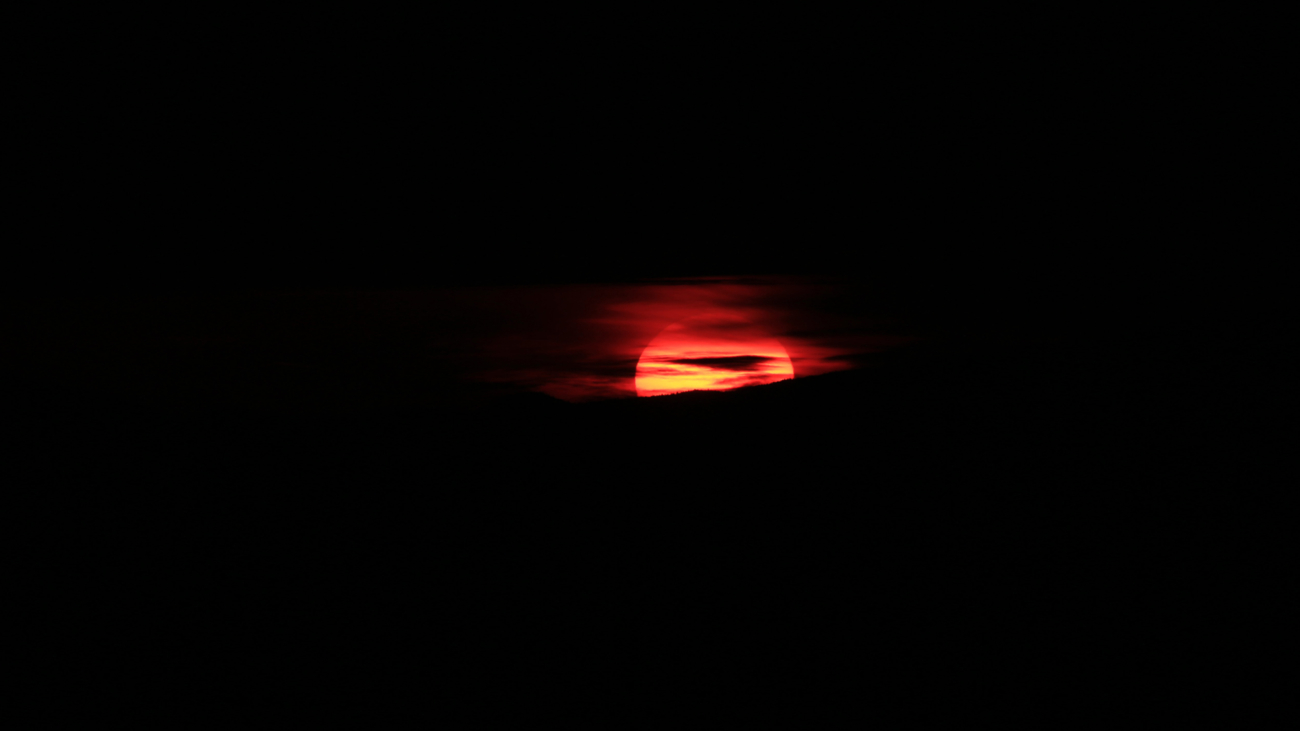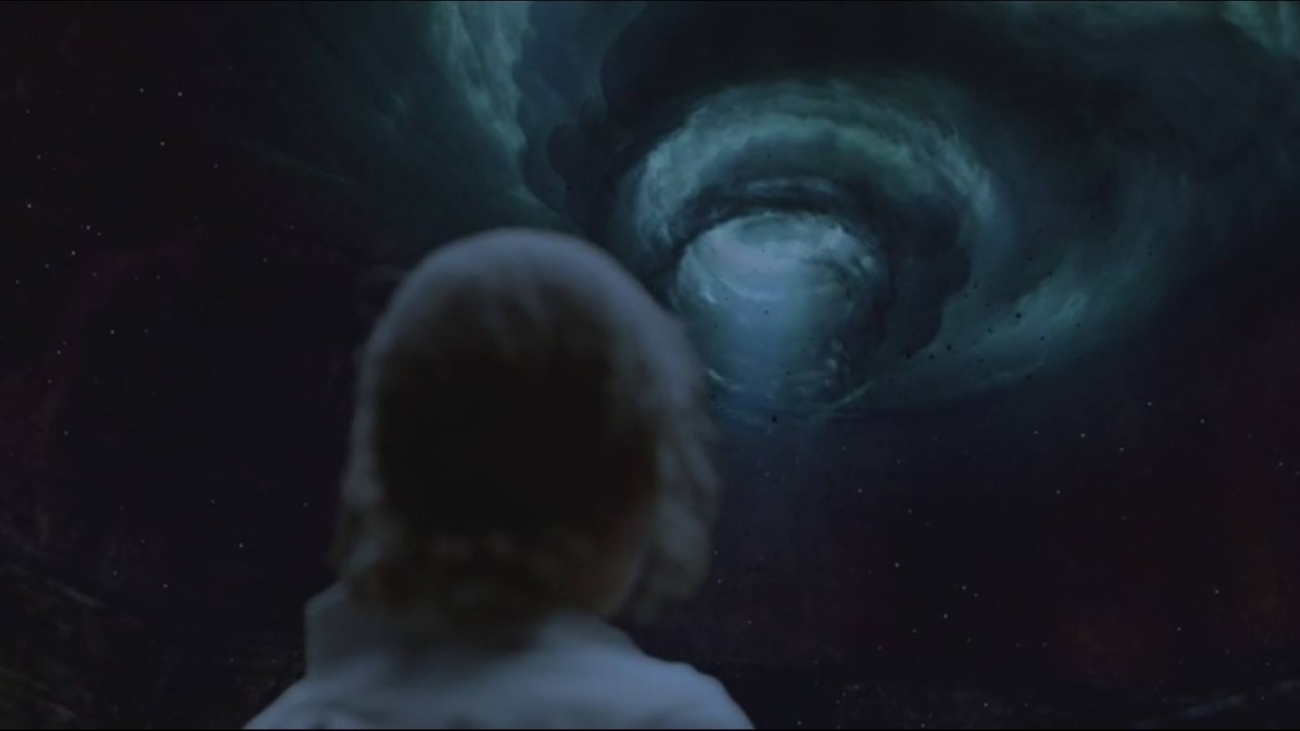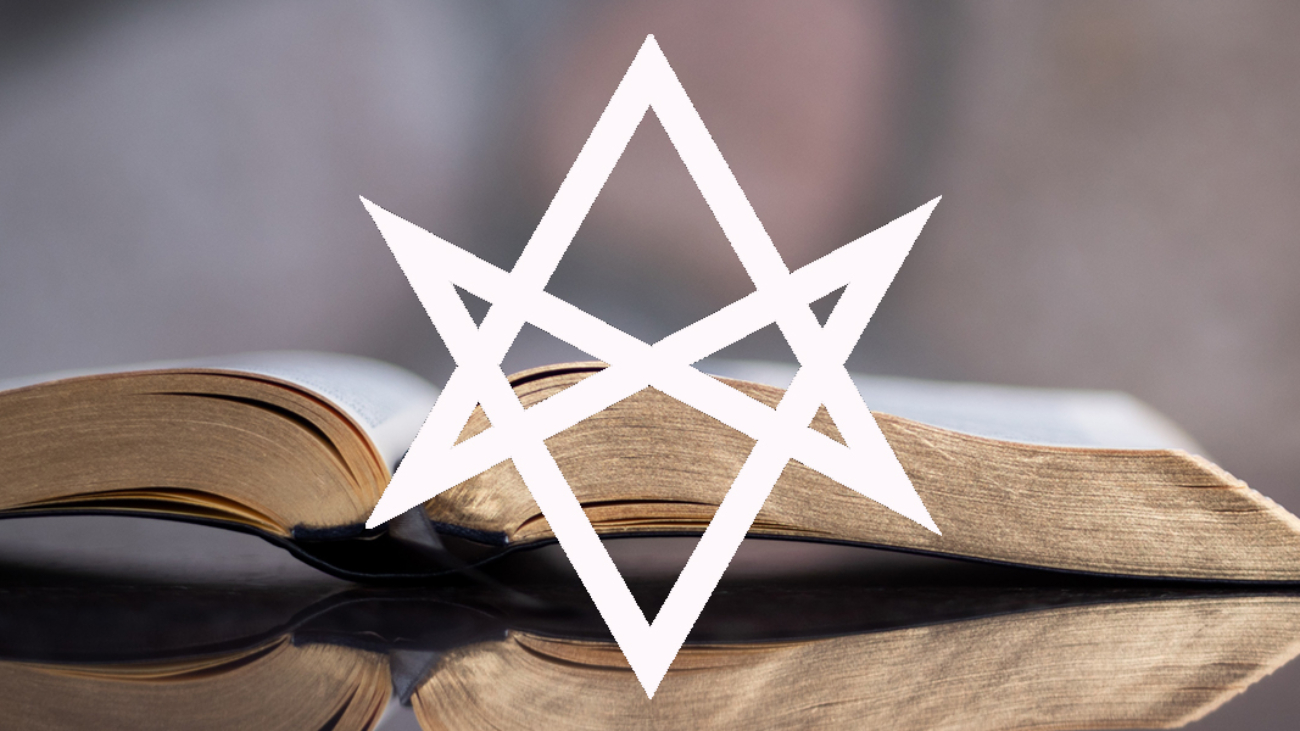A religious rite ought to form a religious community around a common ethos: a set of commonly held values that are both cause and effect of the commonly recognized highest power.
Apophatic Theology and the Gnostic Mass
Deep calls to deep in the roar of your waterfalls; all your waves and breakers have swept over me.
Knowing, Depth, and the Angel
Everything is simultaneously shining but also withdrawing into its depth.
Religious Experience and Ethics
Is there any relationship between religious experience and living a life full of character and conviction?
Reflections on the Path in Eternity (Part 1)

I was recently inspired to create an animated movie based upon my understanding of the Path in Eternity and its relation to certain magical formulae.
The phrase Path in Eternity comes from a passage in Magick Without Tears where Aleister Crowley is describing the initiation rituals of the Man of Earth degree of Ordo Templi Orientis.
Let us begin at the beginning. What is a Dramatic Ritual? It is a celebration of the Adventures of the God whom it is intended to invoke. (The Bacchae of Euripides is a perfect example of this.) Now, in the O.T.O., the object of the ceremonies being the Initiation of the Candidate, it is he whose Path in Eternity is displayed in dramatic form.
Magick Without Tears, Chapter 13, The System of the O.T.O.
He then describes this Path in Eternity in relation to the six sub-degrees of the Man of Earth in the following way:
- O° – Minerval – The Ego is attracted to the Solar System.
- I° – Initiation – The Child experiences Birth.
- II° – Consecration – The Man experiences Life.
- III° – Devotion – He experiences Death.
- IV° – Perfection, or Exaltation – He experiences the World beyond Death.
- P.I. – Perfect Initiate – This entire cycle of Point-Events is withdrawn into Annihilation.
There are three important conclusions to draw here.
First, as in the mystery schools of the ancient world, the purpose of O.T.O. initiation—in particular, this series of six sub-degrees that comprises the Man of Earth—is to introduce a single individual or candidate to a single god. The main difference between the O.T.O. initiations and those predecessor schools is that in O.T.O., the god the candidate is being introduced to is none other than themselves. In Thelema, the term for this god—the divine part of each individual—is the Secret Self or Hadit.
Second, the purpose of the Man of Earth initiations is to dramatize the “path” taken by this god: a complete cycle in which the soul is drawn into incarnation, dies, and is withdrawn back into nothingness. The initiations are conducted in service to and with reverence toward that way of going which is characteristic of the Hadit which all of us truly is. The Path in Eternity is that toward which the entire series of rituals is oriented. The rituals derive their meanings from that Path.
Third, that path has a characteristic shape. It’s cyclical. It’s a passage from silence to speech and back to silence again. This is the exact same path as that taken by the Holy Guardian Angel which Crowley describes in Liber DCLXXI vel Pyramidos and which I quote at the beginning of the video:
For from the Silence of the Wand
Unto the Speaking of the Sword,
And back again to the Beyond,
This is the toil & the Reward.
This is the Path of HVA—Ho!
This is the Path of IAO.
So one of the first points I’m making in the video is that the Man of Earth series of initiations connects at a deep level with one of the core concepts of Thelema, namely, the idea of the Secret Self aka Hadit aka the Holy Guardian Angel.
The particular way in which it connects with that core concept is to show the characteristic going of that god, and to show how that way of going makes contact with an individual human life. In other words the conditions we find ourselves subject to—birth, aging, and death—are not incidental or exterior to our divinity. In fact they are necessary components of the way our divinity expresses itself.
This helps us begin to make sense of another one of the claims Crowley makes about these rituals:
The main objects of the instruction were two. It was first necessary to explain the universe and the relations of human life therewith. Second, to instruct every man how best to adapt his life to the cosmos and to develop his faculties to the utmost advantage. I accordingly constructed a series of rituals, Minerval, Man, Magician, Master-Magician, Perfect Magician and Perfect Initiate, which should illustrate the course of human life in its largest philosophical aspect. I begin by showing the object of the pure soul, “One, individual and eternal”, in determining to formulate itself consciously, or, as I may say, to understand itself.
Aleister Crowley, Confessions
This larger, universal context in which Crowley wishes to situate or orient the individual human life is the aforementioned Path in Eternity, which in turn is the characteristic way of going of Hadit.
Blackness in Liber 65
Debate not of the image, saying Beyond! Beyond! One mounteth unto the Crown by the moon and by the Sun, and by the arrow, and by the Foundation, and by the dark home of the stars from the black earth. (I.9)
So also the light that is absorbed. One absorbs little and is called white and glistening; one absorbs all and is called black. Therefore, O my darling, art thou black. (I.18-19)
Then said Adonai: Thou hast the Head of the Hawk, and thy Phallus is the Phallus of Asar. Thou knowest the white, and thou knowest the black, and thou knowest that these are one. But why seekest thou the knowledge of their equivalence? And he said: That my Work may be right. (I.55-55)
But she stirred not; only by my kisses I defiled her so that she turned to blackness before me. (II.10)
Then came an eagle from the abyss of glory and overshadowed him. So black was the shadow that he was no more visible. (II.31)
I have descended, O my darling, into the black shining waters, and I have plucked Thee forth as a black pearl of infinite preciousness. (III.60)
Thus spake the Magister V.V.V.V.V. unto Adonai his God, as they played together in the starlight over against the deep black pool that is in the Holy Place of the Holy House beneath the Altar of the Holiest One. (IV.15)
For Thou art He! Yea, Thou shalt swallow up Asi and Asar, and the children of Ptah. Thou shalt pour forth a flood of poison to destroy the works of the Magician. Only the Destroyer shall devour Thee; Thou shalt blacken his throat, wherein his spirit abideth. Ah, serpent Apep, but I love Thee! (IV.25)
I felt the red lips of nature and the black lips of perfection. Like sisters they fondled me their little brother; they decked me out as a bride; they mounted me for Thy bridal chamber. (IV.31)
Through the midnight thou art dropt, O my child, my conqueror, my sword-girt captain, O Hoor! and they shall find thee as a black gnarl’d glittering stone, and they shall worship thee. (V.6)
They that drink thereof are smitten of disease; the abomination hath hold upon them, and their torment is like the thick black smoke of the evil abode. (V.62)
What is Lectio Divina?
Lectio Divina—Latin for “divine reading”—is a method of approaching the Thelemic Holy Books (Class A texts).
Balance and Imbalance on the Path
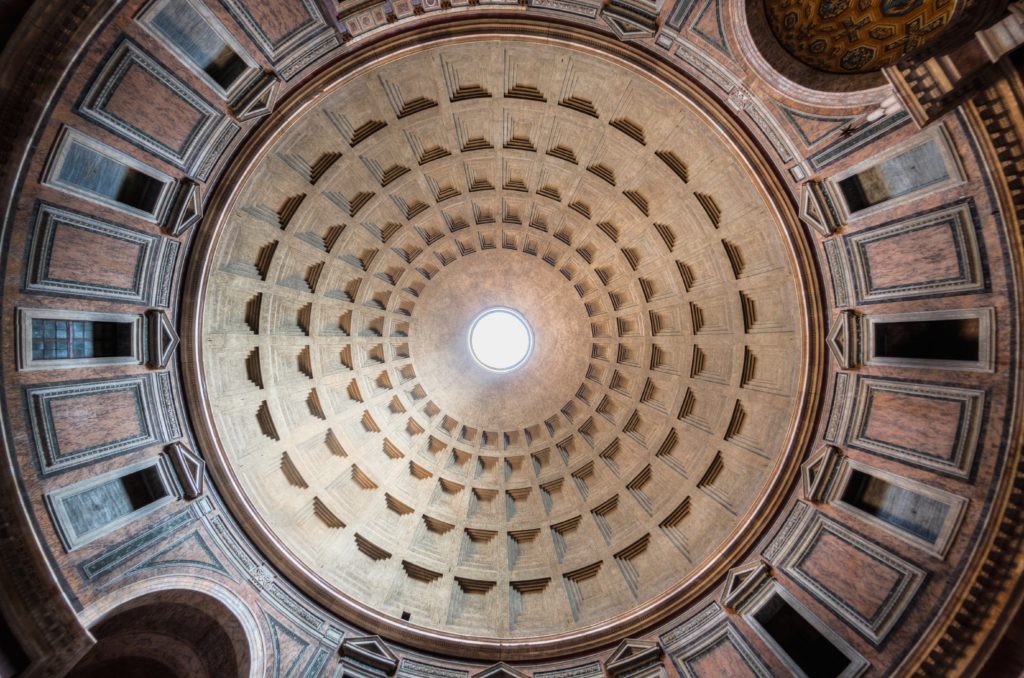
There’s this ancient temple in Rome called the Pantheon. It has a giant domed ceiling with a hole right in the center of it. I visited it in my 20s. I think “grand” is the right word to describe it. It’s not easy to capture in a photo.
When I think about the relationship between magick (especially theurgy) and mysticism, I recall what it was like looking up at the ceiling of the Pantheon from inside. I imagine the flower of the rose-cross painted on the ceiling, the opening in the middle being where the central cross would be. The multi-colored petals would be painted around the hole.

Whether you’re practicing theurgy or yoga, you’re aiming up in both cases. It’s just a question of how you aim. When you unite yourself with some particular god or goddess—or if you’re just working with some particular path—that’s aiming toward one of the petals off to the side of the central opening. But yoga is like aiming in a direct, vertical line through the hole in the roof.
Of course that’s exactly how Crowley thought of Knowledge and Conversation of the Holy Guardian Angel as well. The Holy Guardian Angel is on the middle pillar of the Tree of Life.
The magician devotes himself entirely to the invocation of a God, and as soon as his balance approaches Perfection he ceases to invoke any partial God; only that God vertically above him is in his path. And so a man who perhaps took up magic merely with the idea of acquiring knowledge, love, or wealth, finds himself irrevocably committed to the performance of the great work.
Magick in Theory and Practice, Chapter 15
I shoot up vertically like an arrow, and become that Above. But it is death, and the flame of the pyre. Ascend in the flame of the pyre, O my soul! Thy God is like the cold emptiness of the utmost heaven, into which thou radiatest thy little light. When Thou shall know me, O empty God, my flame shall utterly expire in Thy great N. O. X.
Liber VII, I.37-40
The O.T.O. IX° working is also a middle pillar working. It is attributed to the path of Samekh, the path uniting the Sun (Tiphareth) with the Moon (Yesod). Its hieroglyph depicts a Lion and an Eagle exchanging their essences into a cauldron. The Caput Mortuum drops to the bottom of the cauldron as spiritual air (Aleph, Baphomet) rises. This rising spiritual current is the “Rashith-ha-Gilgalim of the new Universe created of the Quintessence of the Substance of the Unity of the Angel and the Adept, expressed therefrom by virtue of ‘love under will’ at the moment of Rapture.” (Commentary on LXV V.1) This is the spiritual essence unlocked from the Eucharist of One Element, the Medicine of Metals. It is like a cosmic stem cell which can be molded into any physically possible state of affairs by the magician.
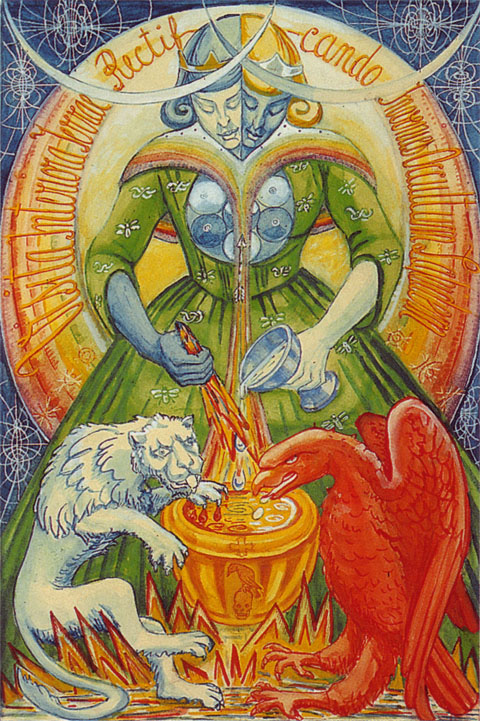
In other words this issue of working the middle pillar applies both to the Knowledge and Conversation of the Holy Guardian Angel as well as the IX° magick. It applies to the mysteries of both A∴A∴ and O.T.O.
This mystery is represented analogously in the Gnostic Mass. Here it is depicted using a eucharist of two elements rather than one. The Priestess is like the Angel of the Priest, and the “moment of rapture” is symbolized when they cry HRILIU.
Another way to put it is that in the case of yoga, one aspires up the middle pillar, but in this particular kind of magick, one manifests a current down the middle pillar (into the organs of generation, which are represented on the Tree of Life by Yesod). Generally speaking, magick is a movement of energy “down the Tree”. The impulse originates with the Will in Chokmah and is given form on the astral at Yesod before manifesting in Malkuth. Yoga, theurgy, and path workings tend to be ascensions “up the Tree”. Both operations (yoga and magick) require mastery of the subtle energetic currents represented by the entire Tree of Life, though.
It’s a commonplace to talk up “balance” in relation to Crowley and Thelema, but it really is an essential theme. “Balance” will mean different things to you at different points of your spiritual development. There’s balance of the elements within your conscious experience. There’s a balance point or borderline between conscious and unconscious which has to be worked with more or less interminably. There’s contrasexual balance points.
What happens typically is that you experience a “calling” into some terra incognita. This might be an entirely new calling, or it might be some perennial difficulty in your life. But it will draw out what Jung called a complex. The easiest way to describe a complex is that you just don’t feel like yourself anymore. You feel like you’ve temporarily become a different person. If you are usually self-controlled, you’re suddenly impulsive. If you’re usually strong, you’re suddenly clingy and weak. If you’re usually kind, you’re suddenly sadistic. And then you have to work with that imbalance in order to get yourself back to a place of balance.
God is above sex; and therefore neither man nor woman as such can be said fully to understand, much less to represent, God. It is therefore incumbent on the male magician to cultivate those female virtues in which he is deficient, and this task he must of course accomplish without in any way impairing his virility. It will then be lawful for a magician to invoke Isis, and identify himself with her; if he fail to do this, his apprehension of the Universe when he attains Samadhi will lack the conception of maternity.
Magick in Theory and Practice, Chapter 1
In my opinion, Crowley’s description of this process here is perfunctory, even blithe.
In any case, there’s really no formula for this. I’m not even going to try to offer “helpful hints” on it. But generally speaking, that’s the work of magick or going “off-center” as I described above.
Is the Holy Guardian Angel part of ourselves or separate?
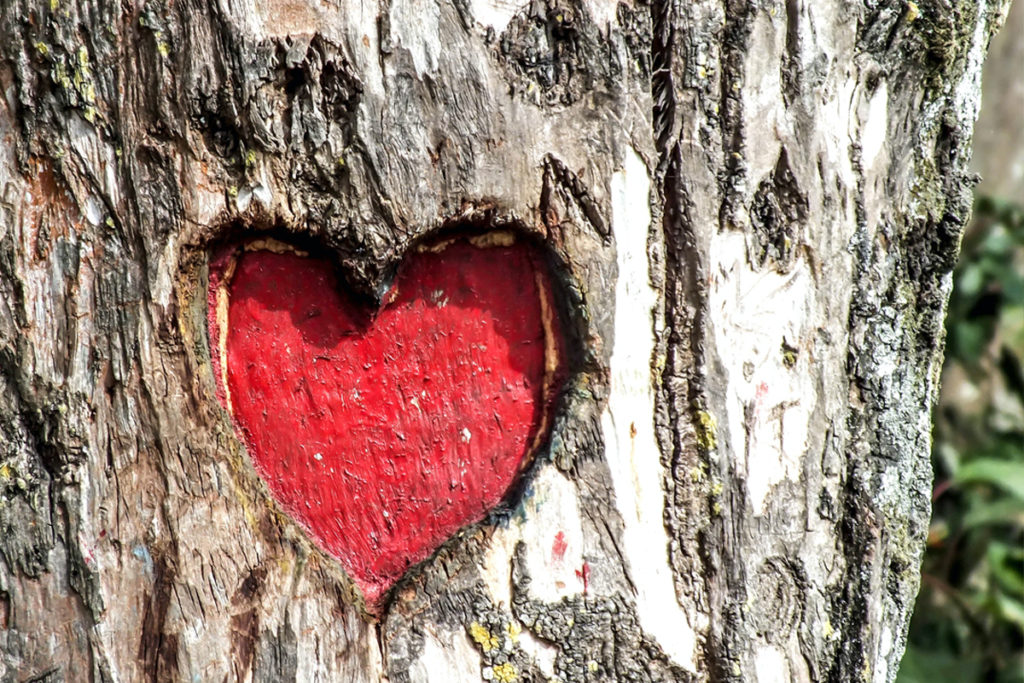
Is the Holy Guardian Angel part of ourselves? Is it outside of ourselves? Is it outside of ourselves but still part of ourselves? Is it the whole universe? Is it just the higher part of my soul? These sorts of questions come up all the time.
In one respect the question is very easy to answer, in another extraordinarily difficult. It’s difficult because Crowley’s idea of the Holy Guardian Angel—he gets the term from Abramelin but gives it legs and makes it the center of his spirituality—is a contribution to a larger discussion about the divine individual which has been going on in Europe and the Near East for over two thousand years. It’s easy because, as far as formulations of the phenomenon go, Crowley’s was pretty straightforward.
Awhile back Erwin Hessel went through almost everything Crowley said on this subject and provided a coherent synthesis. I’m not going to repeat what he said, though I will rely on some of his conclusions. My purpose here is to express as simply as possible what I think Crowley intended so you can get on with your own quest for divine individuality without worrying too much what Crowley himself did or didn’t think.
The quickest way to understand this doctrine is to just take a look at reality. Are you a spiritual seeker? If you are reading this, odds are extraordinarily high that you are. You are responding to some inchoate prompting from within yourself, a prompting which you probably became acutely aware of during adolescence, which you began to attempt to satisfy through spirituality, philosophy, psychedelic drugs, or other devices that would allow you to experience other worlds.
All of that movement toward some other world of light or secrets, all that spiritual practice toward a state of illumination in the future, is driven by a sense of something lacking or being absent in the present.
There are a lot of different ways you can think about what that something is, and there are different names you can choose for it. You can think of it as Buddha. You can think of it as Jesus Christ. You can think of it as a dead ancestor. You can think of it as God. You can think of it as a nebulous spirit. You can think of it as a Secret Chief of A∴A∴. You can think of it as your yoga teacher.
Crowley’s term for this something is Holy Guardian Angel. He chose that term because he felt it was sufficiently vague but also that a child could understand it. But there are really only two things you need to understand about it:
Whether you call it Holy Guardian Angel, Jesus, Buddha, God, the Divine, the Universe, or whatever other name, you are dealing only with a name, a concept, an appearance, an illusion—not reality. You need to understand the concept well enough to use it, but understanding the concept perfectly is not the most important thing. The most important thing is that you are effectively seduced by the image.
When I say “seduced,” I mean that you are sufficiently attracted to the image such that you are willing to pursue it, to go all in for it. In other words, it matters less what the image is, just that it matches closely enough the shape of the absence in your heart.
When I say “image,” I don’t just mean the particular object you are pursuing, be it “union with the divine,” “samadhi” or whatever. I also mean the entire system of practices and beliefs you submit yourself to. This is probably the most difficult part of this to grasp. Practices like meditation and magic are also “images” in the sense that I’m using the term, and it is important that you are seduced by them as well. Theories like Kabbalah or systems like A∴A∴ are also images.
What I’m saying is, you don’t need to pick the right system, and you don’t need to pick the right set of practices, at least not in any abstract sense. You just need to find one and fall in love with it.
Am I implying that you will eventually become disillusioned and fall out of love with it? Not necessarily. That depends on more factors than I can cover here.
The first responsibility of any spiritual teaching is to honor the illusion of separateness between you and the divine. It’s to begin from who and where the student is: a seeker seeking spiritual experience, illumination, realization, wisdom, what have you.
Even if the system you’re working in says that everyone is already divine, and even if you already believe that on some abstract, philosophical level, you don’t really believe it, not in the core of your being. Otherwise why would you be seeking? There is some still absence working on you, and your actions show this even if your words do not.
So in that sense, it’s very easy to answer whether the Holy Guardian Angel is you or part of you, etc. It is not.
Even if you believe on a theoretical or philosophical level that the Holy Guardian Angel is part of you—your Jechidah or True Self or whatever—the actual experience to go along with that concept still lies somewhere in the future for you. So it is still “other”.
You may get to a point where you realize that the Holy Guardian Angel was with you at certain moments in the past, but you just weren’t aware. But that retrospective experience still lies for you somewhere in the future. So it is still other.
Some people have gotten upset because there is a particular Thelemic teacher and author who has said that not everyone automatically has a Holy Guardian Angel, and that they must first prove themselves worthy of one. They reference some remarks Crowley made about the Angel being an “objective being,” perhaps a dead adept of A∴A∴.
Here’s the truth about that idea: there is nothing in principle wrong with it. The idea of spiritual ancestors as teachers is an idea that goes back thousands of years. It’s even arguably at the root of shamanism. People have achieved realization using that idea for a very long time—much longer than the idea du jour that everyone is equally divine and great the way they are.
There is a truth indicated in that idea: the acknowledgment of the appearance of separateness. It is an idea which attempts to reflect the reality that the student starts with, which is that divinity is outside of them spatially, temporally, or both. The experience they are seeking is yet to be—otherwise why use a strategy (teachings, practices, etc.) to attempt to bring it about?
The falsity of the idea lies, not in the fact that it doesn’t represent reality, but that it is an idea or an image at all.
You might think it is so much less absurd to think things like “consciousness is God,” “the universe is divine,” “every person is born with an HGA in their heart,” “the HGA is the Higher Self,” “my sexuality is divine,” “everyone is already enlightened,” “God is all around me,” “I am God,” or even “Every man and every woman is a star.” But I assure you, those notions are just as deluded as the idea that Marcelo Motta is one’s Holy Guardian Angel. And actually the more quickly you realize that, the more quickly you will make spiritual progress.
In fact, my first spiritual awakening happened shortly after having almost that exact thought.
If you don’t like an image, if you’re not sufficiently seduced by it, then just move on to a different metaphor. Find something that better reflects the sense of longing in your heart. But time spent trying to refute some idea or make fun of it is time wasted—which ultimately says more about you than the idea itself.
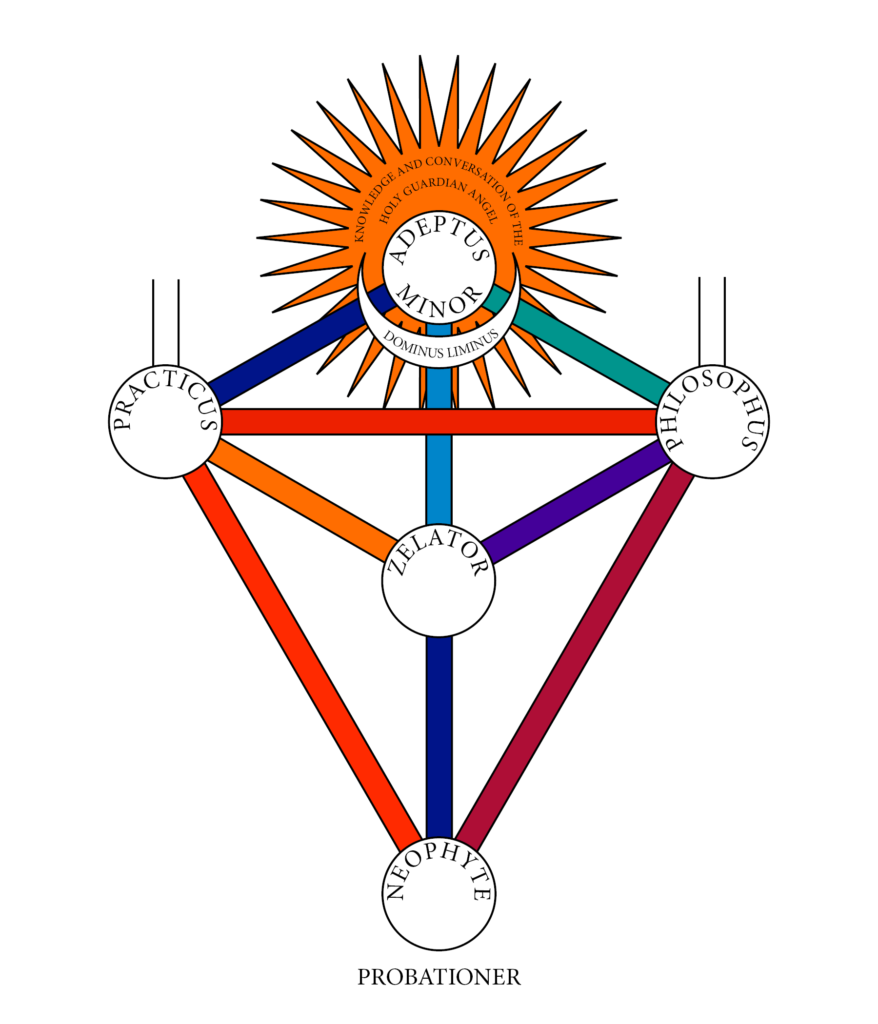
Crowley honors the appearance of separateness by supplying you with the idea of the Holy Guardian Angel, the idea of an experience that lies in your future called Sacred Marriage or Knowledge and Conversation, and a structure—like a ladder, a mountain, or a bridge—that gets you from here to there through stages.
In a certain sense it is very structured. You’ve got the sephiroth on the Tree of Life with tasks you have to complete at each grade. In another sense it is very vague. The idea of the HGA itself is vague. The idea of exactly how to get there—i.e., the particular act that will bring about the Marriage—is undefined and left up to each person. This reflects Crowley’s realization that, although the term Holy Guardian Angel comes from the western occult tradition, the ultimate aim of spiritual practice is non-secular.
Once one achieves Knowledge and Conversation—which is basically samadhi—the metaphor shifts. The Angel is still separate, but one is now also “pregnant” by the Angel. This is illustrated in The Wake World where Lola becomes pregnant in the house of Netzach which Crowley associates with ananda or bliss. The idea of the soul becoming pregnant through bliss is an old one. See Plato’s Symposium.
At the risk of putting too fine a point on this: The aspirant is Heh-final, the Virgin Daughter, whose spiritual longing—which I am speaking of as a heart with a hole in it—is presented as an empty womb in Crowley’s version of Tetragrammaton. The Angel—Vau of Tetragrammaton—fulfills that emptiness, penetrates it, puts a child in it, which it is now the Adeptus’s destiny to deliver.
Crossing the Abyss requires, among other things, clearly seeing the nature of the aggregates or skandhas. One sees that body, mind, thoughts, feelings, habits, and even consciousness are not self and are impermanent. There is the symbolic “delivery” of the pregnancy at Binah. In The Wake World there is now a new “fairy prince” (Holy Guardian Angel) in Tiphareth.
There is a lot of doctrine packed into this symbolism, but here are a few ideas to help work through it.
With the pregnancy, the divine is now “within”. However, with Crossing the Abyss, the idea of “within” and “without” is permanently complicated—which is the same as saying it is completely simplified. Whether the Angel is part of the self, other than the self, was part of the self but not realized, was sometimes part of the self or not—all seen as the wrong questions.
This also permanently changes the meaning of awakening or realization. Crowley uses the metaphor of the self being destroyed as it crosses the Abyss. This makes it sound more dramatic or histrionic than it needs to be. It’s enough to say that awakening does not belong to an individual—maybe in the same way it makes sense to say that pregnancy does not belong to a mother but is rather a moment in the process of the generation of the species. One is not getting something for oneself by waking up but rather completing part of the cosmological cycle. It’s this understanding of the cosmological process which defines Thelema, not “doing my will” or getting anything else for myself.
Therefore the idea of my Angel, my illumination, my Knowledge and Conversation was never part of fundamental reality. That was actually a misunderstanding that had to be worked through. Why? Because reality is such that truth is only ever found in and through falsehood. This is why the notion of the “Angel” as “other” is as necessary as it is false.
The reason there is a new Fairy Prince or HGA down in Tiphareth is because the person who has crossed the Abyss is now a divinely realized being who must teach others. They must now become the image for a student. They must now honor the appearance of separateness for someone else. This is how they continue to serve the cosmological process, which is now understood as impersonal and not about them. But there is another reason they do this which you can guess if you carefully read the paragraph before this.
The student looks with longing at the teacher. They think the teacher is someone who can help them fulfill the absence in their heart. They want to feel God’s heart in theirs, and the teacher is the one who can help them do this, because the teacher has accomplished this for themselves. (The last two words here are delusional—they didn’t do anything for themselves.)
And when the teacher looks at the student, they see the hole in the student’s heart. So they are able to acknowledge the student’s sense of loss. They are able to honor the student’s sense of separation in a way which makes sense to the student, which seduces them. These are the teachings and practices the teacher offers the student to satisfy the longing.
But there is something the teacher sees in the student’s heart which the student cannot.
The hole in the student’s heart is letting through the most brilliant light they have ever seen.
Does praying to the Angel work?
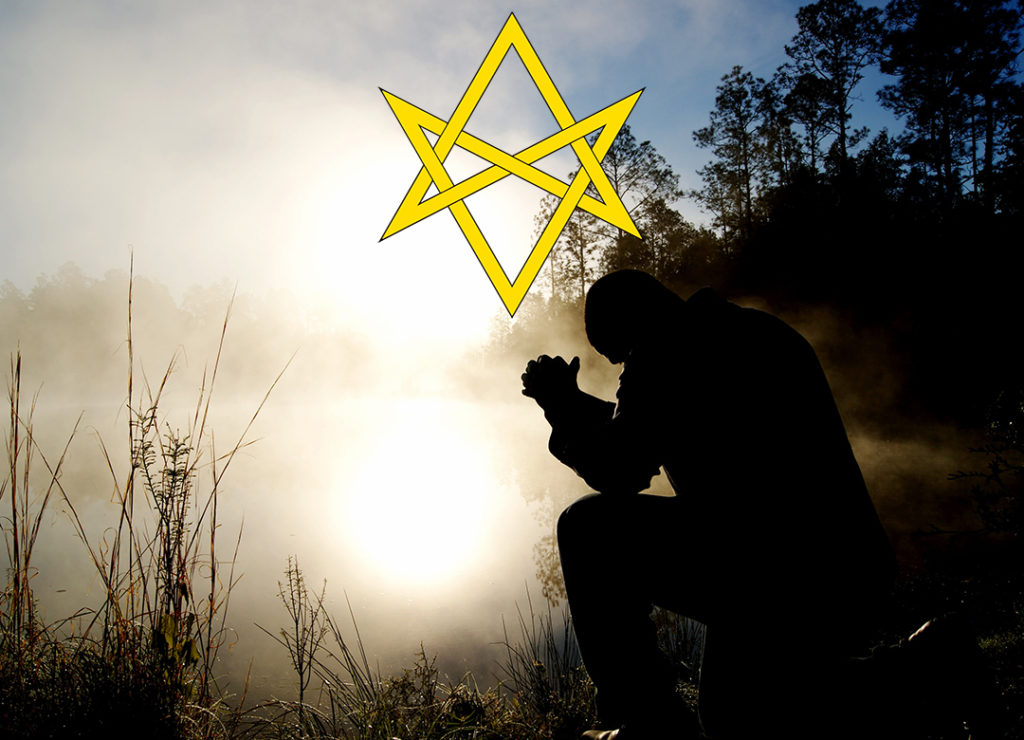
I wanted to elaborate a little bit on something I mentioned quickly in my recent video, Love, Will, and the Angel.
In that video I suggested a more-or-less traditional means of interacting with the Holy Guardian Angel, namely, prayer.
When I was a child, I prayed frequently to God, usually asking for some favor or another but also just for the purposes of ordinary conversation. After many decades, I have returned to prayer of this sort but with an important difference.
I never ask anything for myself when I pray.
I don’t ask to win the lottery. I don’t ask for a job interview to go well. I don’t ask for someone’s illness to be cured. I don’t ask for Bernie to win Michigan. (This last one might be reverse psychology.)
All I ever really ask for is to be a better servant of the divine in this world.
I ask for assistance to have my ignorance lifted. I don’t want to be ignorant about my nature. I don’t want to be ignorant about how the world works. I pray for the light of divinity to work through me in an uninterrupted fashion, unoccluded by false notions about who I am or what I should be doing.
Or as I suggested in the video, if I find myself in a difficult situation, I ask for help seeing how it is that I got myself into that mess and how to find my way out.
I understand that this is not how many occultists think about the Holy Guardian Angel. They think of conversation with the Angel more along these lines. And that’s fine. I wish people acted that way all the time, honestly. At the same time, I think my view on the Angel is consistent with Thelema as a doctrine.
The Angel is not here to rapture you, as the art on the Judgment card of the Coleman-Waite deck would suggest. Insofar as the concepts of salvation or redemption make any sense in a Thelemic context, they seem to entail something more like a change in perspective rather than a miracle.
Crowley’s two favorite metaphors for this seem to be inversion and unveiling.
You can find evidence of inversion or reversal of perspective all over the place. This is largely what the transition from Man of Earth to Hermit is about. It is captured in the imagery of the Beast 666. It’s in the idea of the Lion-Serpent as that which “destroys the destroyer” (i.e., inverts the inversion). It’s ritualized in Liber V vel Reguli. Basically the idea here is that we have an upside-down view on things. We need to be set on our own two feet for the first time, oriented toward the real foundation of things. From an outside perspective this will appear “demonic,” but it is in fact an orientation toward the transcendent and most high.
And then unveiling is the idea of the Khu as a “magical garment” that occludes the divine light within.
Our minds and bodies are veils of the Light within.
New Comment on AL I.8
The idea of the Khu and the “solution of complexes” has always seemed somewhat obscure to me, but the way I’ve come to think of it is that the Khu is like the khandhas or “clinging aggregates” of Buddhism. The Khu is the manifest universe you appear in, or at least the part of it that you consider to be you. There is nothing inherently wrong with manifest existence. There is no “fallen” state to be “redeemed” in other words.
But problems arise when we look at manifest existence as something which we can control or own or call “my,” “me,” or “mine”. To understand the nature of manifest existence means understanding that it changes constantly according to conditions that are beyond our control. This gives rise to detachment and a more balanced, equanimous perspective on reality—and ultimately a happiness that lasts apart from external circumstances.
The Khu remains, but now it no longer occludes the divine light within. This light is not “me” in the ordinary sense but is rather Hadit or Harpocrates. Everything else that I previously called “me” is now seen and correctly understood as an instrument for the expression of that divine light.
But this is essentially what I pray for—to understand nature in precisely this way and thereby to become a more perfect instrument for this divine light.
This is a way in which Thelema is far more like Buddhism than Christianity in my opinion. Buddhism begins from the notion that the main problem is not so much the nature of things themselves but rather avijjā or ignorance. This means that the solution to life’s difficulties is to develop sammā-diṭṭhi or right view, not to be “saved” by the gods or anyone else. I see Thelema has approaching the problem in a similar fashion.
Of course it should be pointed out that neither in Thelema nor in Buddhism can anyone or anything else alleviate your ignorance. It is up to you to do that through your own applied effort. But this mode of prayer can be thought of as practice for surrender of the ego or illusory self to the universal life.
So in short I would say that it does work to pray to the Angel—if the purpose of your prayer is to dispel illusion and to become a more effective instrument of the divine. But I am not of the opinion that the Angel can perform miracles for you like curing disease or putting someone in the White House like Christians think.

